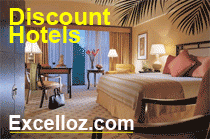Japanese Plum Early Start to Spring
 The Japanese plum or ume (sometimes referred to as Japanese apricot) has played an important role in Japanese culture for many centuries. It was originally introduced from China.
The Japanese plum or ume (sometimes referred to as Japanese apricot) has played an important role in Japanese culture for many centuries. It was originally introduced from China.The plum is associated with the start of spring, because plum blossoms are some of the first blossoms to open during the year. In the Tokyo area, they typically flower in February and March. The event is celebrated with plum festivals (ume matsuri) in public parks, shrines and temples across the country.
Like cherry trees, plum trees come in many varieties, many of which were cultivated by humans over the centuries. Most plum blossoms have five petals and range in color from white to dark pink. Some varieties with more than five petals (yae-ume) and weeping branches (shidare-ume) have also been cultivated. Unlike cherry blossoms (Sakura), plum blossoms have a strong fragrance.
The most popular processed form is the umeboshi, a sour, pickled plum, which is usually enjoyed with cooked rice. The umeboshi has one of the most typical Japanese flavors. Umeshu, a sweet alcoholic beverage made of plums, is also very popular.
Some popular plum spots in and around Tokyo
 Kairakuen (Ibaraki Prefecture): Mito Station, JR Joban Line Ranked as one of Japan's three finest landscape gardens, Kairakuen features over 3000 plum trees of 100 varieties. A plum festival is held annually from February 20 to March 31.
Kairakuen (Ibaraki Prefecture): Mito Station, JR Joban Line Ranked as one of Japan's three finest landscape gardens, Kairakuen features over 3000 plum trees of 100 varieties. A plum festival is held annually from February 20 to March 31.Koishikawa Korakuen (Tokyo): Korakuen Station, Marunouchi Subway Line A beautiful Japanese landscape garden in central Tokyo with a few dozen plum trees. A ume matsuri is held from February 10 to March 4, 2007
Hanegi Park (Tokyo): Umegaoka Station, Odakyu Line
A small park with about 700 plum trees of many varieties. The Setagaya Ume Matsuri is celebrated here on weekends and holidays from February 3 to 25, 2007.
[Source: japan-guide.com]





















0 Comments:
Post a Comment
<< Home